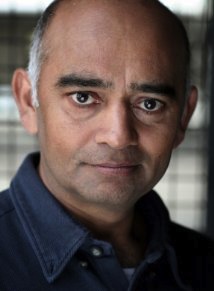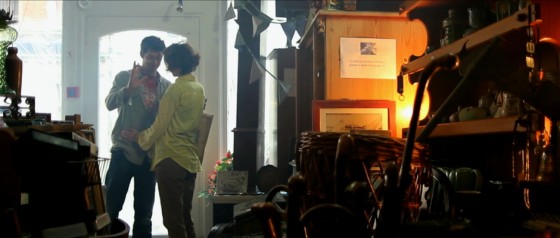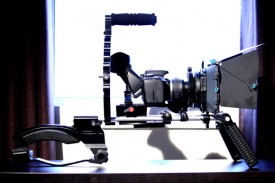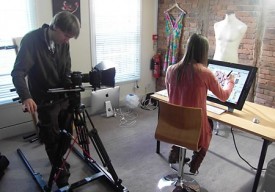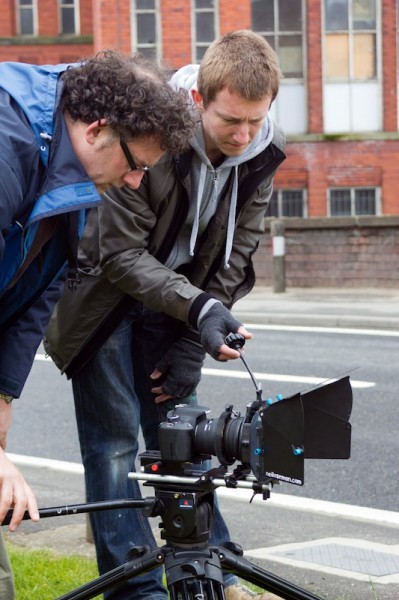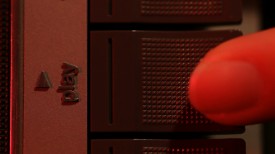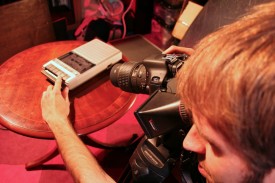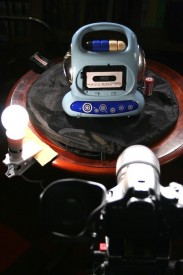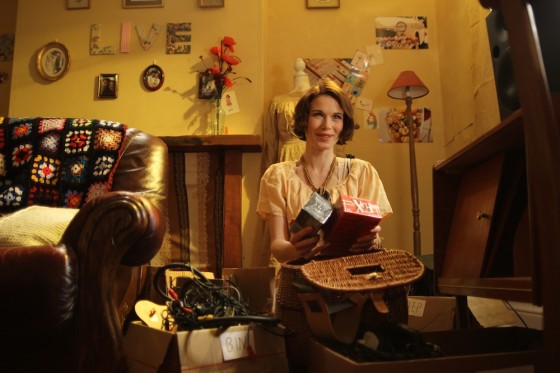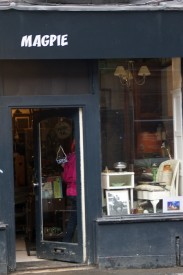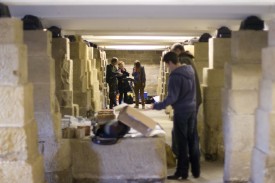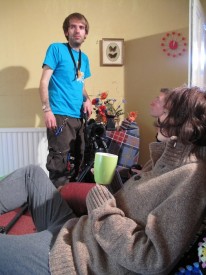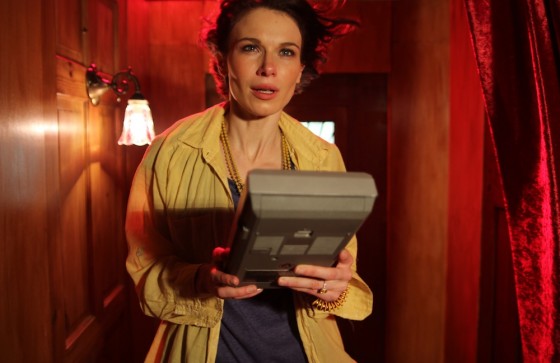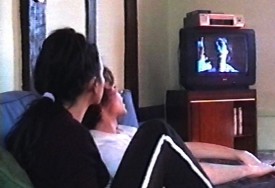
For independent filmmakers, there was a time when trailers were something you didn’t worry about until the movie was finished and you were looking to get it distributed. Maybe you cut a basic one during or just after production to show the cast and crew some of the fruits of their hard work. (This proved a massive morale booster during Soul Searcher‘s six-week principal photography slog.)
But times have changed. Now the saturation of broadband has made video on the web an everyday thing, and a trailer for your short film or micro-budget feature posted on-line has a good chance of reaching some kind of audience and starting to build word of mouth about your project. Not to mention the rise of crowd-funding, for which having a pitch video – typically consisting partly of a trailer – is essential. Indeed, shooting a trailer before you’ve shot the film, in order to raise finance, has become extremely common.
So today I’m going to share some advice on editing trailers. I can’t claim to be an expert on trailer editing – it’s not an area of editing I’ve ever been able to specialise in – but the trailers I’ve cut generally get a good reaction, so I must be doing something right.
By the way, these tips assume that you’ve actually shot the film. If not, you’re more in the area of a teaser trailer, which is a whole other subject.
Music
The first trailer I cut for Soul Searcher – the morale-booster – used Mark Mancina’s theme from Speed. Since it was just for cast and crew and wasn’t going on the internet, the copyright thing wasn’t an issue. But these days you’ll definitely want to put your trailer online, so make sure you have the rights to use the music.
If you already have a composer lined up for your film, it may seem logical to have them score your trailer. This is what I did for Soul Searcher’s second trailer, edited primarily for a preview screening at 2004’s Borderlines Film Festival. Unfortunately this didn’t really work. The composer dutifully reflected every little change in the on-screen action. But that’s not how trailer music works. Trailer music needs to be driving and insistent, and should only change moods at two or three carefully planned points. So here’s the tip:
ALWAYS CUT YOUR TRAILER TO MUSIC. Never edit first and try to add music later or have music written to fit.
Watch the Dark Shadows trailer and notice how they use music to pace the edit and underline the transitions. Also note how they punctuate the comedy by stopping the music for the bigs gags, then bring it back in over a reaction shot.
Structure
Everything you need to know about how to edit a trailer can be learnt from simply watching trailers. You’ll notice that they’re structured into well-defined acts, with a key plot point and a change in the music between each act. Like an actual film, the first act will normally set up the world and characters, the second will present a sticky situation and the third will be about trying to resolve that situation, although of course in a trailer no resolution will come.
These days the studio logos tend to be a few shots in, or even at the start of the second act. If you don’t have a motion graphic logo for your production company, now’s the time to sort one out because it won’t feel like a trailer without it.
At the end of the third act will be the title and the “button”. This is a final beat – a sort of exclamation mark at the end of the trailer’s sentence – and is usually comedic. That’s followed by a couple of brief screens of credits (SFMoviePoster is a useful font to get hold of here) and a release date.
Look at the structure in The Dicator’s trailer below: a prelude building mystery, a first act setting up the character, a second act showing the kidnapping predicament, and a third act in which hilarity ensues. Possibly.
Style
Two stylistic things that have been pretty big in trailers for a few years are speed changes and lines over black.
Speed changes work best on tracking or craning shots, and quite simply involve speeding up the first part of the shot for no other reason that it looks kind of cool. Slow motion is used a lot as well, often because you need to emphasise a dramatic point in the trailer more than the director felt was necessary for the film itself. For the same reason, adding a digital zoom-in to a key close-up is quite common.
Running lines of dialogue over a black screen is another emphasis tool. Typically these come at the transition points between acts. We get a montage of shots and music, then everything goes black and silent except for one key line of dialogue, then – BOOM! – a new piece of music kicks in and we’re assailed with moving images once again.
Similarly, fades to black get used a lot in trailers. These can help hide continuity issues caused when you compress a scene, but also aid generally in pacing.
Strobing has become popular lately too – cutting black frames into shots to break them up. It adds pace and makes the viewer feel like they’re not getting to see everything. See the end of this Prometheus trailer for an example.
Text and Voiceovers
Keep these to a minimum. In fact, don’t do a voiceover at all unless you can afford to hire the actual Trailer Voice Guy. Anyone else voicing over your trailer will immediately make it sound amateurish, unless it makes sense for one of the characters in the film to do the VO.
And don’t put your cast’s names up in big letters in your trailer, unless they’re genuine name actors.
Taglines are fine as on-screen text. Check out trailers for films in a similar genre to help you choose a font. There was a time when every trailer had text which moved towards you, with the letters simultaneously separating out. That fad seems to be over now, but look out for things like this in big movie trailers which you can emulate. Dramas and chick-flicks tend to have their captions over a background of out-of-focus points of light – easy enough to shoot with a DSLR and some Christmas lights if you can’t get hold of a stock motion graphic.
Take This Waltz, below, uses this kind of text background.
Sound
Sound is just as phenomenally important in a trailer as it is in any other moving image format. Bad sound can instantly ruin all the hard work you’ve put in to make your trailer look like a “real” trailer.
It can be difficult, especially if you’re cutting your trailer early in post-production. You haven’t done your ADR yet and you don’t even have a post-production sound crew on board.
The solution? Download Audacity – a free piece of audio editing software – and use its noise removal filter on any troublesome production sound. It won’t work miracles, but if you have background noise like traffic, hiss or mains hum it will seriously reduce it. As a side effect you will get digital artefacts, but these will be inaudible once you’ve mixed in your music.
Make judicious use of good sound effects. Get hold of some nice, chunky whooshes to underscore your speed-changes, or your captions zooming on. If your film is a comedy, maybe throw in a record scratch effect when your music jars to a halt for an act change.
Check out the use of loud, whooshy, slammy noises (technical term) in the Men in Black III trailer:
And finally…
In case you somehow missed it, here’s the trailer for my new short film, Stop/Eject:
